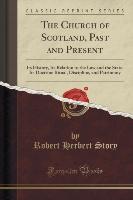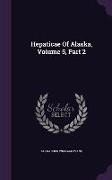- Start
- The Church of Scotland, Past and Present
The Church of Scotland, Past and Present
Angebote / Angebote:
Excerpt from The Church of Scotland, Past and Present: Its History, Its Relation to the Law and the State, Its Doctrine Ritual, Discipline, and Patrimony
The Pontifical of Bernham, bishop of St. Andrews, in the thirteenth century, has been lately published, and might lead to the conclusion that the consecration of churches was then a novelty in Scotland. It certainly was in use elsewhere. There are allusions to it as early as the time of Constantine. We cannot doubt that it was general throughout our island in the eighth century, for it is alluded to in an ordinance of the Arch bishop of York, full of the jealousy with which southern pre lates - proud of their connection with Rome - looked on the Celtic churches They who have been ordained by bishops of the Scots or Britons, who do not wear the tonsure as other presbyter-ecclesiastics do, nor observe Easter as we observe it, ought to be confirmed by an orthodox bishop, with laying on of hands and prayer: in like manner churches consecrated by these bishops ought to be sprinkled with holy water.1 But the custom had at least fallen into disuse, for the Pontifical records the consecration by Bernham of more than half of the churches under his rule, and the dates do not cover the whole term of his episcopate. One of the churches consecrated was Kelso, which had been founded more than a century before. There is a trace of the use of provincial service-books in a list made in 1436 of books belonging to Aberdeen Cathedral It contains three Pontificals, but one is distinguished from the others as being de usu Curiae Romanas.s Later still in date is the Aberdeen Breviary, drawn up by Bishop Elphin stone, and printed by Chapman in the beginning of the six teenth century. It and the earlier Arbuthnott Missal are made interesting, not so much by liturgical variations, as by references to ancient Scottish saints. Apparently the Breviary was one of a series of service-books which was issued about that time as an assertion of ecclesiastical independence. An Act of Council, in 1507, provided that no books of Sarum should be allowed but mass books, manuals, matin books, and breviaries after our own Scottish use. Now that the organ has been reintroduced, many would wish to know the date of its earliest use in Scotland. Tytler, the historian, founding on allusions in Fordoun, carries it back to the time of Alexander III. Calder wood and the older Tytler say that it was introduced by James I.
About the Publisher
Forgotten Books publishes hundreds of thousands of rare and classic books. Find more at www.forgottenbooks.com
This book is a reproduction of an important historical work. Forgotten Books uses state-of-the-art technology to digitally reconstruct the work, preserving the original format whilst repairing imperfections present in the aged copy. In rare cases, an imperfection in the original, such as a blemish or missing page, may be replicated in our edition. We do, however, repair the vast majority of imperfections successfully, any imperfections that remain are intentionally left to preserve the state of such historical works.
Folgt in ca. 5 Arbeitstagen



